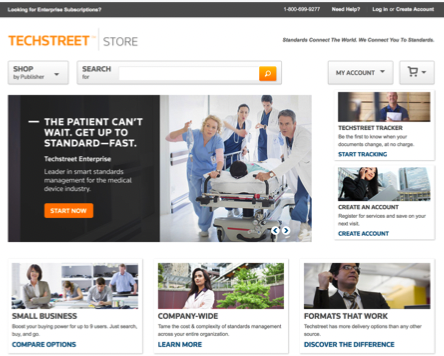The Challenge
Outdoor Co. decided to use the universal navigation bar atop their multi-billion dollar online store to share the diverse initiatives they offered. They came to The Understanding Group (TUG) for help with a strategic effort to redesign the universal navigation bar in ways that served all the people who visited their digital place.
The challenge of messaging, expectations, and context was significant. Outdoor Co. is well known for their retail stores, which are staffed by knowledgeable experts helping support their mission to promote outdoor life. They also have a significant digital retail presence. Yet, even though their mission drives many initiatives, most of their audience sees Outdoor Co’s digital presence as entirely retail.
The core question they were asking about their digital place was simple but difficult in execution: How might Outdoor Co. better expose all their offerings online so people could discover and use them without compromising other people’s ability to shop?
The initial strategy engagement began a long-term partnership between TUG and a multidisciplinary team from Outdoor Co. that designed and validated a successful new architecture that places dozens of sites within a small collection of realms that can be navigated in universal ways. The end result was a strategy guide that was the Northstar of the new navigation scheme, supported with a variety of maps, models, and conceptual designs.
Learning About the Current State
When working with large ecosystems, we have developed a way to work with Jobs To Be Done (JTBD) using Archetypes. Archetypes are clusters of common intent and engagement behaviors. They help us anticipate all of the needs people would “hire this digital place” for.
Phases used to audit the current state of Outdoor Co.'s digital environment
Choosing Nodes. We began by mapping the universe of content from a variety of perspectives including # of pages and volume of visits—with a particular emphasis on the variety of page types and behaviors they enabled.
Comprehensive site inventory, including usage patterns.
Auditing Nodes. After determining we had accounted for all important nodes within the ecosystem we audited a selection of 285 and cataloged 464 “jobs”.
Node inventory, organized after the node audit.
Affinitize Jobs. We then distilled these 464 jobs down to 156 unique jobs and came up with a provisional way to cluster them into 9 provisional groups. We then held a meeting with a variety of stakeholders from across the organization to work with the 156 jobs and to cluster them as a group into Draft Archetypes.
With a clear understanding of business and user intent and behavior, we set about architecting a new structure which we validated over a total of nine tests of structure and labels.
“Proven experts who blew us away with the modeling of their research. It was a game changer.”
Solving for the Future
At the heart of this initiative was a comprehensive, iterative research program which informed the architecture.
Each successive hypothesis was derived from the findings from earlier tests :
A baseline study to establish how the current structure performs
Studies 1 & 2 used very simple prototypes to identify a good set of labels for a new structure. Study 3 was stopped and morphed into 4.
Studies 4–6 were used to explore and refine the structure
Study 7 focused on refining the labels for the final structure
Study 8 validated the final structure and labels.
A final Baseline Repeat compared the new structure with the current structure.
Over the course of the project, five different research modalities were employed using a progression of increasingly detailed prototypes. We ran tests with a total of 644 people—representing a broad, diverse demographic.
Research Modalities: Sensemaking, findability, labeling, and categorizing tests; and semi-structured exploration.
Results
As shown in the progression of prototypes below, they were all fairly simple, and only toward the end did they begin to look much like a website. By starting simple and building fidelity on top of the confidence gained from the previous study, we were able to efficiently move forward knowing that every decision we made was grounded in solid research.
The end result was a new structure that clearly outperformed the current structure and elicited exactly the kind of feedback from research subjects the client had hoped for.
“It was a home run.”








